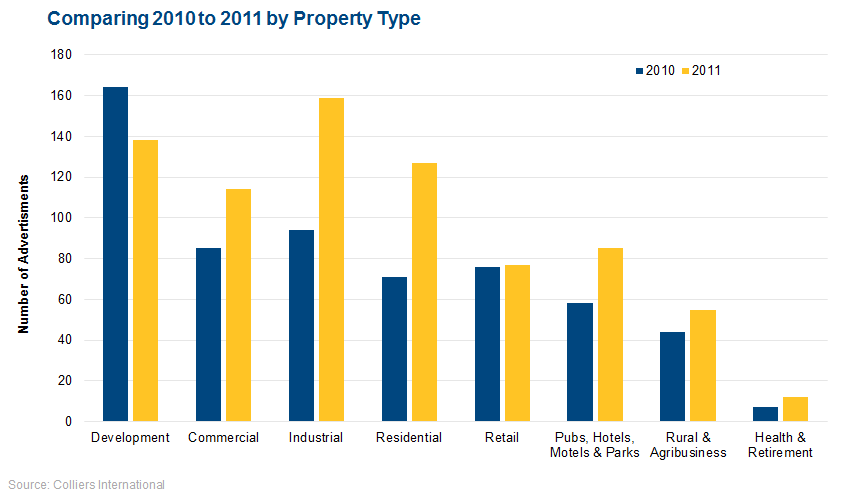Australia’s distressed property listing numbers are on the up, according to new research, with private investors and SMSFs swooping in to capitalise on this trend.
According to Colliers International research, the number of distressed properties that were put on the market last year increased by more than 20%, with the total number of distressed listings rising from 595 in December 2010 to 717 a year later.
While industrial and development properties took the top two spots for distressed listings, a marked increase in listing numbers saw residential property take the third spot.
The highest number of distressed listings was found in the troubled South-East Queensland property market, with the NSW market also showing a high number of distressed properties.
Of the distressed properties handled by Colliers International, for example, 106 were in Queensland and 84 were in NSW.
While private buyers were the most active when it came to picking up a distressed property last year, Colliers International director, Investment Services, Matthew Meynell noted that there has also been a strong upswing in the number of SMSFs making enquiries about distressed assets.
“Any property that has a strong tenancy profile has attracted significant interest from this buyer group,” he said, adding that most SMSFs are adopting the “traditional property fundamentals” of having multiple income streams coming not only from residential property, but also from retail and commercial.
Gold Coast land grab
Commenting on the high number of distressed property sales in Queensland, Colliers International Insolvency Property Services Queensland team leader Stewart Gilchrist noted that investors have been targeting land sites in particular – with a view to developing the site to sell on at a profit.
“Generally, the purchasers of these kinds of assets in Queensland are private investors – we’re finding good interest in these assets from people with cash looking to turn them around and add value,” he said.
Victorian development opportunities
While the number of distressed properties that were on the market in Victoria last year was relatively small, Colliers International Insolvency Property Services Victorian team leader Jeremy Gruzewski noted that distressed listing numbers in the state picked up during the second half of 2011.
“Although the quantity has been minimal compared to the northern states, it appears the microscope has been turned onto Victorian owners,” he said.
“Buyers with the ability and funds to redevelop and lease a vacant possession, non-income producing development site are the buyers with a real opportunity in the Victorian market. If you’re a cashed up developer in 2012, there will be great opportunities.”
WA development warning
It appears that cash is king for developers in WA, too, with Colliers International Insolvency Property Services WA team leader Brett Wilkins noting that a change in the attitude of the banks towards funding development projects has contributed to an increase in the number of distressed assets on the market in WA.
“The majority of distressed assets offered in 2011 were development sites – either residential, urban deferred or country tourism sites,” he said.
“2012 is looking like it will be a big year in this market, with banks and receivers indicating a need to improve their balance sheets given the European economic situation.”
He added that those investors who need to offload a distressed asset need to have a clear strategy – which doesn’t necessarily mean selling it as soon as possible.
“There may be further value to be added by repositioning the asset prior to offering for sale, or bundling with others to create scale for larger buying groups,” he said.
The results:
.png)

Would you consider cashing in on distressed assets? Join the debate on our property investment forum.
More stories:
